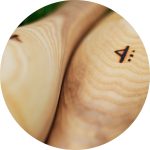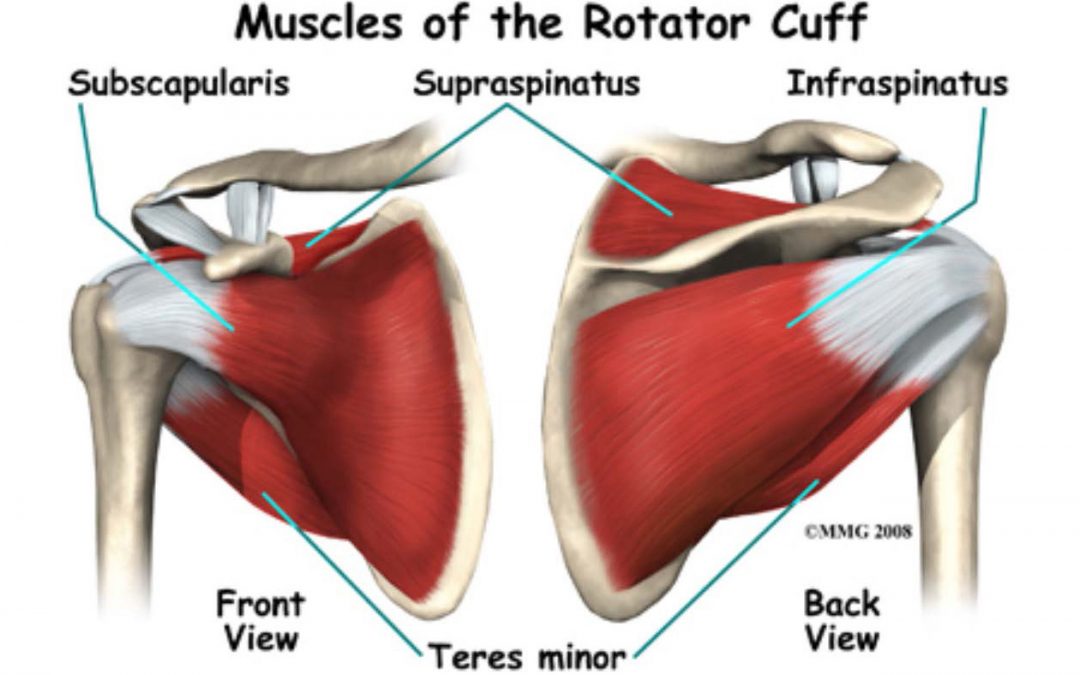Indian Clubs can help the shoulder rotator cuff – whether you are an elite athlete or casual sports person, or need help with a shoulder injury.
It is easy to train visible muscles like the deltoid which provide power to raise the arm, but a little more creativity is needed in maintaining the lessor known, deeper seated muscles of the shoulder. Impact sports such as rugby as well as racket and club sports have a history of shortened sporting careers through shoulder injury. I believe much of this could have been prevented. We will soon know as a lot is being spoken now of the rotator cuff and how important it is to optimise and preserve this vital turning point in our body. Learning to understand the 4 muscles that work symbiotically, helps us realise how important range of movement and fluid usage is in keeping this joint happy and operating in an optimal way.
These muscles are small in comparison to the better known and larger muscles of the region – deltoids, lats and pecs that give power to the shoulder. However, they play critically important rolls in terms of orienting and stabilising the joint – crucial in injury prevention. they are:
- Supraspinatus – above the scapula attaching to the head of the humerus
- Infraspinatus – reaches out from below scapula to the head of the humerus
- Teres minor – reaches out from below scapula to head of the humerus
- Subscapularis – from the scapula, reaching to the front of the head of the humerus.
The first three compliment the latisimus dorsi. The fourth works with the pecs. Both groups opposingly flex and stretch during internal and external shoulder rotations.
A more in debt video illustration can be found here: https://www.youtube.com/watch?v=SfUmN_V-28w
 HARMONY OF OPPOSITES
HARMONY OF OPPOSITES
Indian club training works on providing coordination and fluidity of the rotator cuff muscles as well as the bigger surface muscles of the shoulder ball and socket joint. ‘Heart-shape’ swings begin with a downward inner swing in front of the body that stretches the first 3 cuff muscles and their companion muscle – the lats – as the shoulder closes. This flows into a wrist rotation behind the body that opens the shoulder and compresses the same afore-mentioned muscles. Whilst these muscles stretch and compress, the opposite is happening with pecs and their companion rotator cuff muscle – subscapularis – which also compress and stretch in during the club swinging movement.
Stretching and shortening is what these muscles love to do in a dynamic and fluid way. This movement creates harmony with the large muscles working with the small muscles. A continuous yin/yang dynamic happens during each heart-shape revolution.
JOIN THE REVOLUTION
Whatever your reason for picking up a pair of clubs, whether pre-hab, re-hab or strengthening the source of your levers, all will benefit from regular practice with good technique. Buying a pair of clubs is a good step to make but… there is good practice, pointless practice and bad practise. Learn with a lighter pair first and do the simple basics to build up familiarity first. Find a trainer or seasoned practitioner. There are a few around, but starting to grow. We hope to welcome Paul Wolkowinski to the UK again when he is fit again. Tom Crudgington at Body Development is another primary source. Pete Hodkinson at BodyMind-Fit also trains clubs.


Comments 3